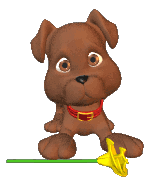If you are thinking of adding a dog to your family, consider adopting your new best friend from an animal shelter or humane society. You’ll not only get a good feeling from helping a homeless pet, you’ll get an outstanding companion. The staff at these organizations carefully check the animals for sound health and good temperament. In addition, some shelter animals have had the benefit of training to develop good manners while they waited for a new home.
Through no fault of their own, a lot of great dogs wind up in animal shelters hoping for a second chance at happiness. People relinquish their pets to shelters when they are no longer able to care for them. Sometimes this is because the owner was unprepared for the responsibility that comes  with caring for a dog. Often, however, caring owners struggling with life-changes or trying to cope with family tragedy realize their pet would be better off with someone else. They bring them to the shelter because they know the animal will be well cared for and placed in an excellent home.
with caring for a dog. Often, however, caring owners struggling with life-changes or trying to cope with family tragedy realize their pet would be better off with someone else. They bring them to the shelter because they know the animal will be well cared for and placed in an excellent home.
You can find just about any age, size and breed of dog at an animal shelter. Often, people underestimate how difficult it is to care for a litter of puppies, and turn them over to the shelter to raise and adopt out. In other cases, young dogs are relinquished because their previous owners didn’t have the time to provide regular exercise for the pup. So, if you have your mind set on a puppy, a shelter is a good place to look. However, if you would like a more mature dog that is likely already housebroken, you’ll find these kinds of canines at a humane society or animal center.
Upon arrival, shelter staff carefully evaluates each animal for physical and behavioral soundness. They make note of quirks, and work with specialists to eliminate negative behaviors. Most shelters have adoption counselors who interview potential adopters to understand their needs and lifestyle so they can make the perfect match.
Bringing your newly adopted dog home is exciting for you, but may be a little overwhelming for her. Keep her on a leash as you take her from room to room, giving her plenty of opportunity to sniff. You may want the first stop on your tour to be the backyard or wherever you want her to relieve herself. The excitement of a car ride and coming to a new place can give her the need to empty her bowels or bladder.
Dogs are creatures of habit, so the sooner you establish a firm routine, the more comfortable your new dog will become. Always feed her in the same spot and at about the same time each morning. You’ll find she grows to anticipate “what comes next.” For example, if you always feed her after you bring in the newspaper, you’ll notice she becomes very excited when you open the door to step outside. Dogs catch on quickly.

 Occasionally the glands can get clogged or blocked, causing the dog to lick at its anus or drag its rear across the floor or ground. Sometimes these actions will empty the anal gland. If the gland remains clogged, it can become infected very quickly, abscess, and can even rupture. An absessed anal gland or ruptured anal gland is a veterinary emergency.
Occasionally the glands can get clogged or blocked, causing the dog to lick at its anus or drag its rear across the floor or ground. Sometimes these actions will empty the anal gland. If the gland remains clogged, it can become infected very quickly, abscess, and can even rupture. An absessed anal gland or ruptured anal gland is a veterinary emergency.